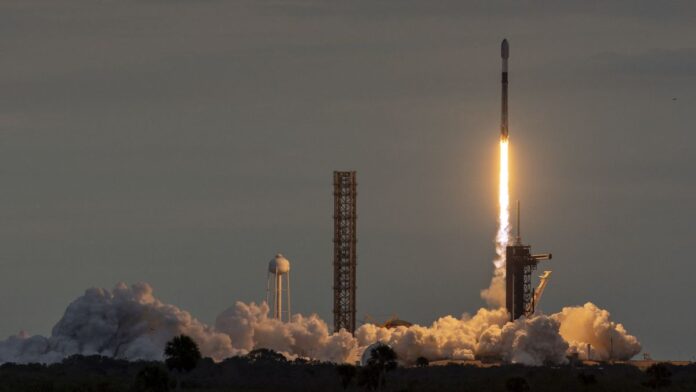SpaceX is ready to launch some belated New Year’s fireworks of its own on Tuesday with a mission to fly 114 different satellites into orbit to kick off 2023.
A Falcon 9 rocket from SpaceX will launch the company’s epic Transporter-6 rideshare mission at 9:56 a.m. EST (1355 GMT) from Cape Canaveral Space Force Station in Florida. You can watch the launch live here at Space.com in a livestream brought to you by EOS Data Analytics (EOSDA).
The Transporter-6 mission will launch EOS SAT-1 for EOSDA on this mission; that’s the first of seven agriculture-focused satellites for the company’s new constellation. EOS Sat-1 will be the last of the 114 satellites to deploy during the Transporter-6 mission, according to a SpaceX mission timeline.
“This launch brings new game-changing possibilities of satellite technologies to the agricultural industry. EOSDA will now work with proprietary datasets to provide even deeper and more accurate insights for its customers and partners,” EOSDA CEO Artiom Anisimov said in a statement.
Related: 8 ways SpaceX has transformed spaceflight forever
EOS SAT-1 is designed to scrutinize 386,000 miles (1 million square kilometers) daily using 11 bands of light. Examining the crop’s health in this way is expected to allow farmers to better customize their care for the crops, to reduce carbon dioxide emissions, energy consumption and water usage, among other benefits.
The full EOS SAT fleet, when ready around 2025, will aim to look at 4.6 million square miles (12 million sq. km.) every day, which is about a third more than the equivalent area of the United States. The seven satellites, built by Dragonfly Aerospace, aim to reach 100 percent of countries “with the largest areas of farmlands and forestlands,” EOSDA’s statement added.
There are other satellite crops that will fly to space aboard Transporter-6 as well. For example, Spire Global plans to launch six satellites (opens in new tab) to expand its constellation monitoring maritime and aviation traffic using ADS-B technology.
Spaceflight Inc. plans to heft four Kleos spacecraft (opens in new tab) to a sun-synchronous orbit that keeps consistent lighting conditions below the fleet. Kleos examines radio frequency transmissions from space to search for “hidden and illegal activity”, its website states (opens in new tab).
The Transporter series of missions are “dedicated rideshares,” meaning that they feature what may be dozens of small satellites flying to space on a single Falcon 9 rocket. SpaceX has not confirmed the full manifest of Transporter-6 on its website. The first mission of the series, Transporter-1, launched a record 143 satellites on Jan. 24, 2021.
The Falcon 9 rocket for Transporter-6 has a first stage that is making its 15th flight. The booster previously launched SpaceX’s Transporter-2 rideshare mission, three commercial satellite flights and 10 Starlink satellite missions, SpaceX has said. If all goes well, the booster should return to a landing pad at Cape Canaveral Space Force Station for a touchdown.
Elizabeth Howell is the co-author of “Why Am I Taller (opens in new tab)?” (ECW Press, 2022; with Canadian astronaut Dave Williams), a book about space medicine. Follow her on Twitter @howellspace (opens in new tab). Follow us on Twitter @Spacedotcom (opens in new tab) or Facebook (opens in new tab).

